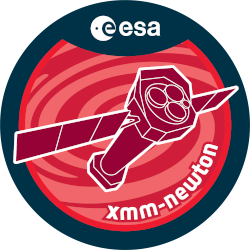

| Proposal ID | 080308 |
| Title | Features in the X-ray spectrum of an isolated rotation-powered pulsar |
| Download Data Associated to the proposal | https://nxsa.esac.esa.int/nxsa-sl/servlet/data-action-aio?obsno=0803080101 |
| DOI | https://doi.org/10.5270/esa-7o6v73v |
| Principal Investigator, PI | Prof Oleg Kargaltsev |
| Abstract | Until recently spectral features had been found only in X-ray Dim IsolatedNeutron Stars (XDINSs), Rotating Radio Transients (RRATs), magnetars, andCentral Compact Objects (CCOs) in SNRs, which all are exotic members of theknown neutron star population dominated by rotation-powered pulsars. In our EPICobservation of an ordinary 100-kyr-old pulsar J1740+1000 we unexpectedly foundsolid evidence for absorption features in an isolated rotation-powered pulsar.We request a much deeper observation to study the features in detail, measurethe phase-dependent changes in the feature energies, widths and depths, andestablish their physical nature. These findings will have far-reachingimplications for understanding the physics of NS magnetospheres and atmospheres. |
| Publications |
|
| Instrument | EMOS1, EMOS2, EPN, OM, RGS1, RGS2 |
| Temporal Coverage | 2017-09-10T17:03:59Z/2018-04-05T15:12:03Z |
| Version | 17.56_20190403_1200 |
| Mission Description | The European Space Agencys (ESA) X-ray Multi-Mirror Mission (XMM-Newton) was launched by an Ariane 504 on December 10th 1999. XMM-Newton is ESAs second cornerstone of the Horizon 2000 Science Programme. It carries 3 high throughput X-ray telescopes with an unprecedented effective area, and an optical monitor, the first flown on a X-ray observatory. The large collecting area and ability to make long uninterrupted exposures provide highly sensitive observations. Since Earths atmosphere blocks out all X-rays, only a telescope in space can detect and study celestial X-ray sources. The XMM-Newton mission is helping scientists to solve a number of cosmic mysteries, ranging from the enigmatic black holes to the origins of the Universe itself. Observing time on XMM-Newton is being made available to the scientific community, applying for observational periods on a competitive basis. |
| Creator Contact | https://www.cosmos.esa.int/web/xmm-newton/xmm-newton-helpdesk |
| Date Published | 2019-07-10T22:00:00Z |
| Last Update | 2025-08-04 |
| Keywords | "rotation powered pulsars", "xray spectrum", "EPIC", "ns magnetosphere", "pulsar j1740", "phase dependent", "solid evidence", "supernova remnant" |
| Publisher And Registrant | European Space Agency |
| Credit Guidelines | European Space Agency, Prof Oleg Kargaltsev, 2019, 'Features in the X-ray spectrum of an isolated rotation-powered pulsar', 17.56_20190403_1200, European Space Agency, https://doi.org/10.5270/esa-7o6v73v |